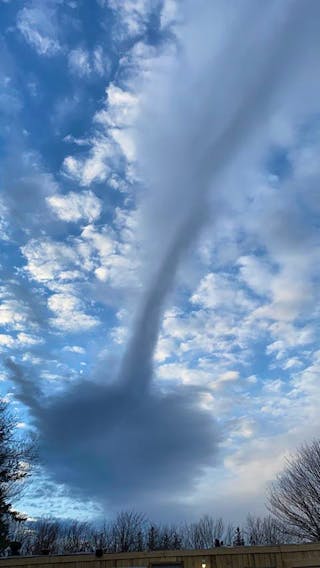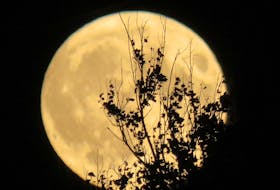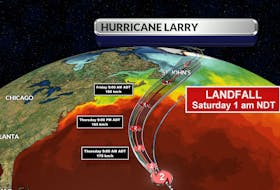Clouds come in all shapes and sizes.
Rarely does a day go by that I don’t get a photo or two of a cool cloud formation. Earlier this month, Tasha Vander Kooi posted a photo on my Facebook page that certainly got my attention. At first glance, it looked like some kind of upside-down funnel. Tasha’s comment was: “I saw this cloud at our cottage in Amherst Head, N.S. Can you tell me about this, please. Someone told me it was a spout. Could they be right?”
What looks like a dark cloud is recently hatched lake flies or midges. Yes, you're seeing that right – that’s thousands upon thousands of them clustered together in a mating frenzy.
In the springtime, when the water starts to warm up, midges break from the surface of the lake to mate; they then return to the surface to release their eggs and die. And the cycle continues.
There are biting and non-biting midges. A midge is another name for a small two-winged fly. Lake midges are often found near bodies of water. These flying insects are also known as lake flies or chironomids. They are one of the most common and most abundant organisms in aquatic habitats. Larvae are found in small and large natural lakes, residential lakes and ponds and slow-moving, shallow rivers. During adult emergence periods, it’s not unusual for several thousand adults per square metre of surface to emerge on a nightly basis.
Many of us are reacquainted with midges in the spring by way of a bug-covered lakeside balcony or a random insect in your contact lens. They are annoying but midge attacks usually only last for a few days at a time.
You can avoid some of them by leaving the lights outside your house off at night, keeping your windows closed and staying away from waterfront trails.
Once their mass mating session is done, the non-biting bugs disperse or die, leaving behind huge piles of midge corpses on windowsills, balconies and the like.
Annoying, yes, but not nearly as threatening as a spout or funnel cloud.
- Want more weather information? Visit your weather page.
- Have a weather question, photo or drawing to share with Cindy Day? Email [email protected]
Cindy Day is the chief meteorologist for SaltWire Network









